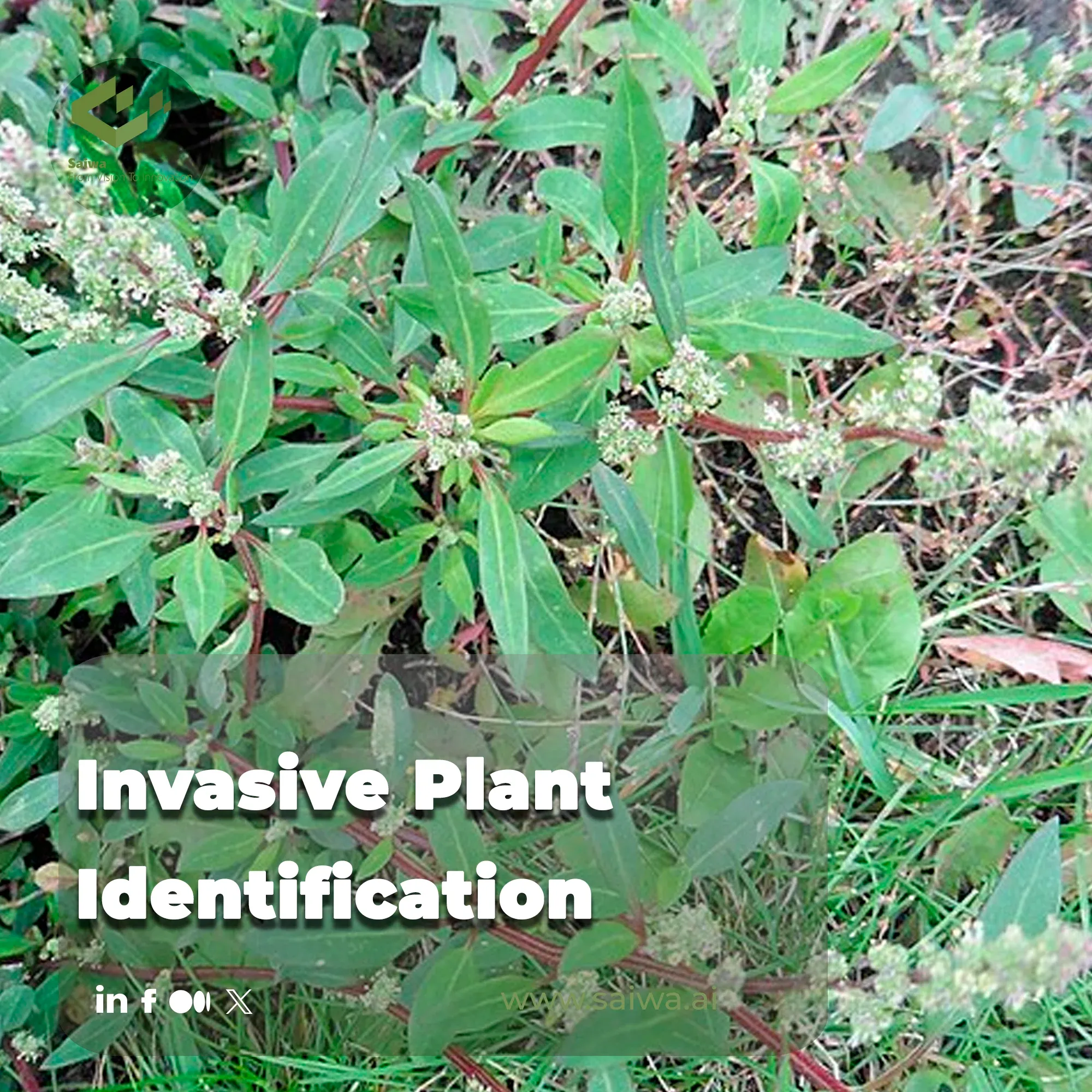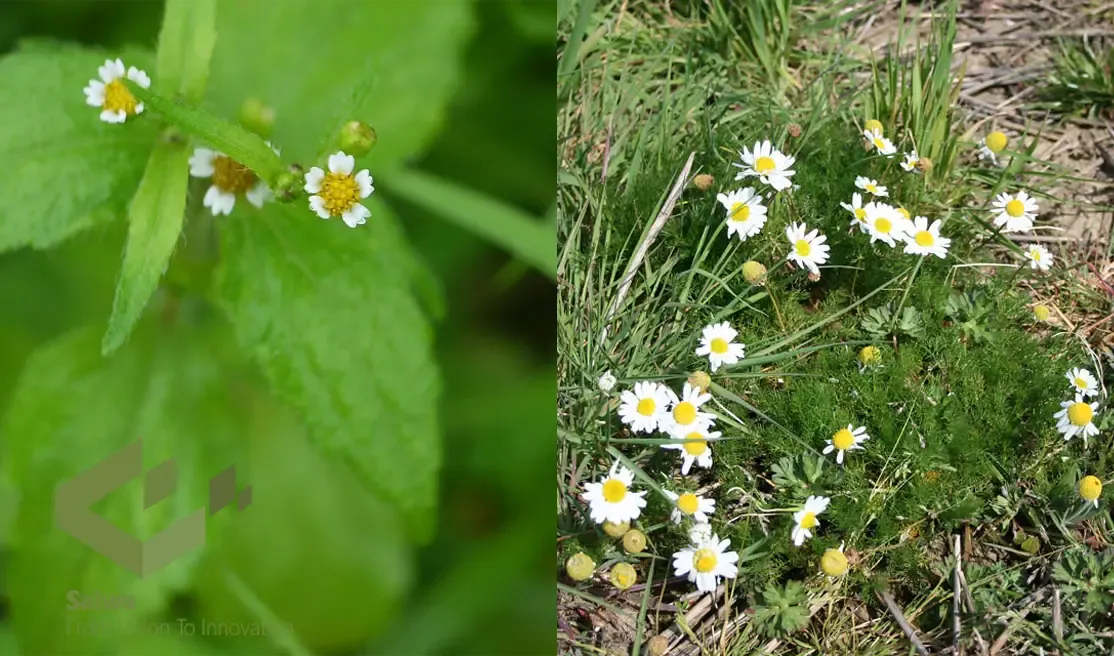Invasive Plant Identification – A Modern Guide to Protecting Landscapes

The unchecked spread of invasive alien plants is not just an ecological nuisance; it's a critical threat to agricultural productivity and global biodiversity. These aggressive species can decimate crop yields, degrade soil health, and disrupt local ecosystems, costing the agricultural industry billions annually.
The first line of defense is timely and precise identification. This is where advanced platforms like Saiwa’s Sairone are setting a new standard, transforming our ability to protect valuable landscapes.
This guide delves into the primary botanical threats facing modern agriculture, outlines the limitations of conventional methods, and showcases how AI-powered solutions are creating a more sustainable and efficient future for land management.
How Invasive Plants Spread and Why Early Detection Matters
Invasive plants spread quickly by wind, water, animals, and human activities such as farming and trade. Once these plants are established, they can overtake native species, disrupt ecosystems, and reduce agricultural productivity. Early detection is crucial because small infestations are easier and cheaper to control, which prevents widespread ecological and economic damage.
Common Invasive Species That Threaten Agriculture
To effectively protect our agricultural lands, it's crucial to recognize the key adversaries. Several species pose a significant and direct threat to both crops and natural habitats. The following are among the most persistent and damaging:
Gallant Soldier – An aggressive annual weed known for severely impacting maize, potato, and soybean yields.
Chamomile (scentless) – A formidable competitor to cereal crops, this weed is a prolific seed producer, with a single plant capable of generating prolific quantities.
Daisy Fleabane / Canadian Fleabane – This species is particularly troublesome due to its increasing resistance to common herbicides, including glyphosate.
Goosefoot – Highly competitive and adaptable, it can cause yield losses in corn and serves as a host for various plant diseases.
European Water Chestnut – An aquatic invader that forms dense floating mats, obstructing waterways and harming native aquatic life.

Geographical and Ecological Concerns
Invasive plants don't spread evenly. Climate, soil, and local ecosystems can create hotspots where infestations grow quickly and threaten the biodiversity of the area. Seasonal changes further complicate identification because leaves, flowers, and growth patterns shift throughout the year. Even advanced AI detection systems may miss critical outbreaks without region-specific adaptation, allowing invasive species to become established before intervention is possible. This highlights the importance of adapting AI tools to local ecological conditions to ensure timely and effective management.
The Challenge: Why Traditional Methods Aren’t Enough
While awareness is growing, the tools traditionally used to combat these threats are falling behind the pace and scale of invasions. The effectiveness of legacy approaches is constrained by several factors:
• Manual surveys are incredibly time-consuming, costly, and susceptible to human error. Teams must physically inspect large areas, which limits coverage and slows response time, allowing invasive plants to establish and spread.
• Delayed response can worsen infestations. By the time plants are detected, they may have already spread extensively, making eradication more difficult and costly.
• Misidentification is common due to seasonal changes in plant appearance and the close resemblance many invasive plants have to native species.
• Tracking the spread of an infestation across large or inaccessible agricultural areas is logistically challenging.
• Data gaps and inconsistent record-keeping hinder long-term management. Traditional approaches often rely on paper logs or infrequent surveys, producing incomplete datasets that prevent accurate modeling of spread and prioritization of interventions.
How AI is Changing Invasive Species Detection
Artificial intelligence is not merely an incremental improvement; it is fundamentally revolutionizing the fight against invasive plants by overcoming the core limitations of traditional methods.
By leveraging sophisticated algorithms and high-resolution data, AI offers a scalable, precise, and rapid solution to a problem that has long plagued agriculture and conservation. The power of this approach lies in its ability to process and interpret vast amounts of visual information with superhuman speed and accuracy. Here’s a closer look at the key technologies driving this change:
Deep Learning and CNNs: At the heart of this transformation are deep learning models, particularly Convolutional Neural Networks (CNNs). These algorithms are trained on extensive image libraries to recognize the unique morphological traits of invasive plants—from leaf shape and texture to flower color—enabling them to distinguish weeds from crops with high fidelity.
Drone-Based Image Acquisition: AI systems are fueled by data from high-resolution drone cameras. Drones systematically capture detailed aerial imagery across vast or inaccessible terrains, providing the granular visual data required for precise analysis and mapping of infestations.
Automated and Efficient Analysis: AI automates the entire process of Weed Detection. Advanced platforms can analyze thousands of images, identify target species, and generate actionable reports in a fraction of the time required for manual surveys, enabling rapid response efforts.
Optimized Algorithms for Performance: The use of lightweight models, such as MobileNet, ensures that these powerful analytical tools are not only accurate but also computationally efficient, allowing for faster processing and deployment in diverse operational environments.
Sairone: AI-Powered Invasive Plant Detection and Crop Monitoring
At the forefront of this technological shift is Sairone, Saiwa’s specialized AI suite for agriculture and environmental monitoring. Sairone integrates advanced AI with drone imagery to deliver actionable intelligence.
The platform automates the analysis of aerial data, identifying invasive species and monitoring overall plant health with unmatched precision. In a landmark project with Ducks Unlimited Canada, Sairone was deployed to detect European Water Chestnut, successfully reducing manual survey time by over 85%.
By processing immense volumes of visual data automatically, Sairone provides land managers with clear, clustered reports of weed populations, enabling highly targeted and efficient treatment plans.
